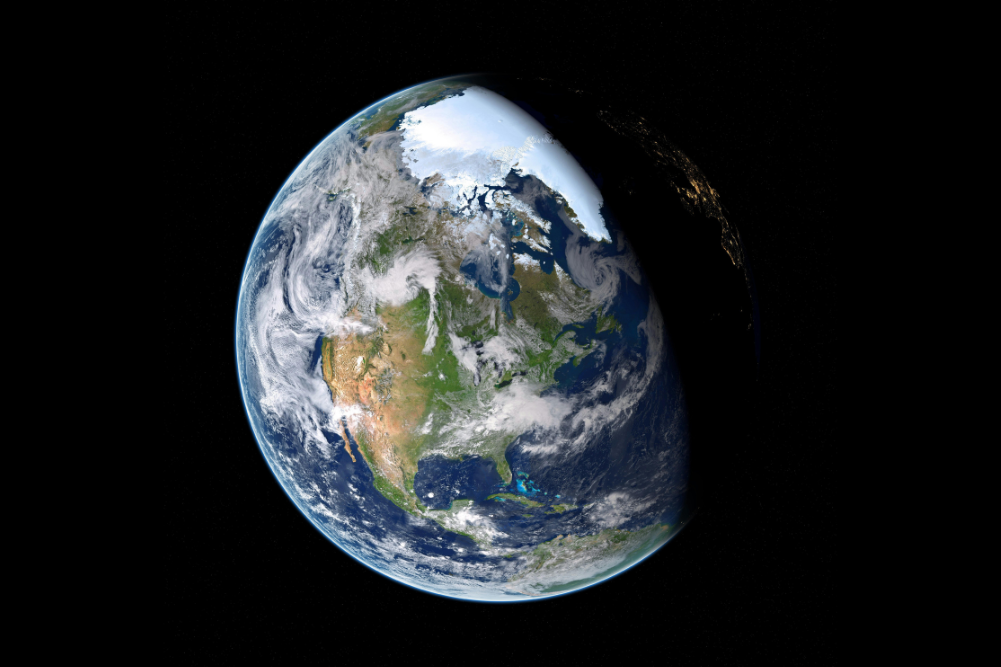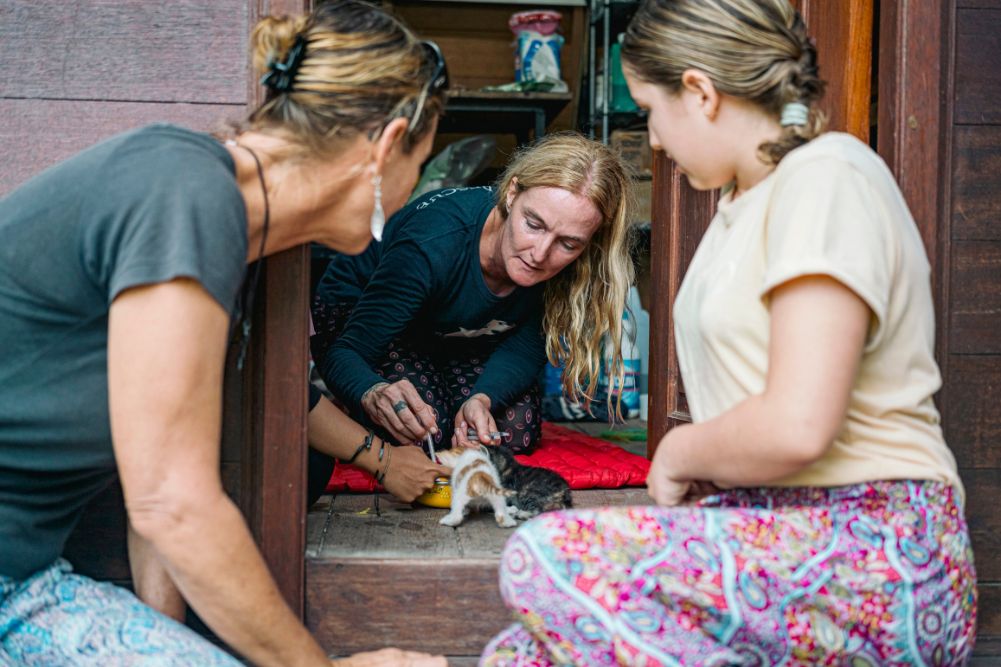Will we continue to have the food we love in the future?
Australians love food but, unfortunately, our relationship with it — as well as its producers, processers and sellers — has shifted so dramatically in the past century it’s becoming harder to find real food. No longer do we have a vegie patch out the back, a cousin who owns a farm and a greengrocer on the corner. These days, the closest many people get to the source of their energy is at the supermarket checkout.
Is the current food system an optimal one for feeding Australia into the future? Should we be aiming to grow and eat real food? Or should we perhaps be aiming for enough food, food that’s real enough?
Last issue we looked at how farming in a more sustainable and ecological way can help independent producers, rural communities, the planet and you survive amid dramatic population growth and daunting environmental challenges. Now, let’s examine how the food that Australian farmers produce, and how it’s processed, stored, distributed and purchased, will determine the reality of our food future.
What food will future farmers grow?
Two-thirds of Australia’s land is dedicated to agriculture and 90 per cent of that is for grazing on native pasture, according to the Australian Bureau of Statistics. In 2012, the highest value of production, in order, was cattle, wheat, dairy, vegetables, fruit and nuts, lamb meat and wool, but most farmers produce both wheat and sheep.
However, the quality of the soil that supports this agriculture — and the amount of topsoil — has declined. According to the Department of the Environment, much of Australia’s agricultural land “is under pressure from either soil erosion, loss of natural vegetation cover, over-use of irrigation water and the impacts of introduced invasive species. Problems such as soil salinity, acidification and rising groundwater all appear to be on the increase.” Soil fertility is declining in one-third of all cropped land.
These days, the closest many people get to the source of their energy is at the supermarket checkout.
With Australia the driest continent on Earth, and with most of our soil shallow, salty and nutrient-poor, soil degradation is something we can ill afford.
Yet these issues aren’t limited to Australia. The Global Assessment of Soil Degradation, a three-year appraisal of land quality that attempted to map the severity of degradation worldwide and concluded in 1990, found that erosion by water was the most prominent degradation feature, followed by physical and chemical deterioration, soil fertility decline and soil pollution. Fast-forward to 2015, the UN-designated International Year of Soil, and globally we’re losing about 24 billion tonnes of fertile soil annually, estimates the German report Soil Atlas 2015.
The quality of food produced has declined alongside soil quality. Through studies such as the Earth Microbiome Project, which involves analysing microbial samples taken from soils around the planet, researchers and farmers are starting to understand more about little-known issues such as how soil micro-organisms can affect the health and productivity of crops and, as with mycorrhizal fungi, offer potential solutions. They’re finding that healthy soils are critical for healthy produce.
To care for the soil and prevent hunger and nutrition-related chronic diseases, we’ll have to change how we grow our food, what we produce and how we consume it. Here are some solutions.
Change how we raise animals & how we eat meat
Just 55 per cent of the world’s crop calories feed people directly, according to Jonathan Foley, director of the Institute of the Environment at the University of Minnesota in the US; the rest is fed to livestock or turned into biofuel or industrial products. Most Aussie farmers graze cattle and sheep on grass. Intensive feedlot operations, however, fatten animals on grain that’s produced on land that could be better used to grow food for humans directly.
Ruminant animals such as cows and sheep contribute heavily to GHG emissions due to the methane they emit. Furthermore, ethical concerns surround raising animals, mainly chooks and pigs, in the intensive confined feeding operations required to satisfy our taste for animal products. Such intensive farming also leads to issues around managing excrement, which is copious and highly acidic.
Finding more efficient ways to raise pastured animals, as well as eating less meat, would feed more mouths and help the environment, too.
Investigate alternative food sources
Bureau of Meteorology data shows that 2014 was the hottest year on record, findings in line with reports from the US National Oceanic and Atmospheric Administration, the UN weather organisation, the UK Met Office and Japan’s meteorological agency. All confirm an upward trend in temperatures in recent decades.
With a hotter, dryer climate ahead, researchers are investigating alternative foods that suit such conditions. Individual farmers are also experimenting with producing less water-intensive, more resilient crops and animals, and adapting how they farm. Examples of what might land on your plate in the future include traditional bushtucker plants that thrive in arid conditions and, as gross as it may sound to us Westerners, insects such as mealworms. Research shows that, per unit of protein produced, mealworm farms require less land, use less energy and produce fewer emissions than chicken, pork, beef or milk.
A 2013 Food and Agriculture Organization (FAO) report collating multidisciplinary research reveals broad benefits to using semi-cultivated insects for human food and stockfeed as part of a broader strategy to achieve global food security. Insects are a healthy and available source of protein and are eaten in many countries, the report’s authors write.
Produce foods that feed people & heal the environment
What’s good for us doesn’t exclude what’s good for the planet. For example, a trial underway near Port Lincoln in South Australia is investigating how growing native Australian seaweeds alongside aquaculture operations could improve the environmental footprint of fish and shellfish farming, which will become more intensive in future years.
Kathryn Wiltshire, aquatic sciences research officer at the South Australian Research and Development Institute, says the benefit of “integrative multi-trophic aquaculture” is that, “You’re turning fish waste into another product. The seaweed grows better with this fertiliser, you increase overall farm productivity, and farmers benefit through product diversification.”
Seaweed can be a nutrient-dense food. Its extracts are used in functional and medicinal foods and as emulsifiers in processed products, and it can be used in stockfeed and as a fertiliser to enrich the soil. While research is in the early stages, Wiltshire reckons seaweed could be a lucrative additional commercial crop: “Australia’s a net importer of seaweed, so once the farming technology’s there, there’s a huge market.”
Breed improved plants & animals
Selective breeding to produce more resilient, higher-yielding crops and livestock is a practice as old as agriculture itself. There are well-publicised concerns about the faster way to get the same results though: genetic engineering (GE), also known as genetic modification (GM). GE involves transplanting genes for a desired characteristic into an organism and offers many potential benefits; however, it carries the risk of unexpected harmful effects for human health and the environment.
Science and industry have embraced GE as a solution to food shortages and significant R&D is being invested in it in research bodies in Australia and abroad. Currently, according the Department of Agriculture, GE crops approved for commercial release in Australia are cotton and canola, but trials of other crops — including bananas, barley, wheat and sugar — are taking place at trial sites in Victoria, New South Wales, Queensland and the Northern Territory.
While there may appear to be immediate benefits from such emerging technologies, the possibility of increased health or environmental risks and side-effects requires careful handling and governance.
How will food get to your plate?
The industrial food system involves trucking produce and animals to warehouses, abattoirs and processing plants near cities, then back out to regional supermarkets and retailers. Food is also imported to satisfy demand for out-of-season, cheaper or exotic produce. It’s a system that’s heavy on food miles, fossil fuels and packaging, vulnerable to natural events such as floods, and full of nutrient-depleted foods, as fruits and veg are often picked when unripe for improved transport and storage.
It’s a system that, as author Julian Cribbs highlights in his 2007 paper The Coming Famine, is being increasingly challenged by resource constraints and environmental risks such as climate change. It’s also a system that leads to good food going to waste.
It’s a system that’s bad for producers, too, says Robert Pekin, food sovereignty advocate and founder of food-box scheme Food Connect. In it, Pekin says, farmers are price-takers — prices are set by supermarkets or buying agents — and they remain anonymous to consumers. “This is where you get mental health issues with farmers. They get no acknowledgement and no connection with people who eat their food.”
Also, the price pressures placed on farmers is what forces them to increase yields by any means to survive. This can lead to nutrient-depleted soil and food and isn’t sustainable into the future. And demand for ever lower prices can be devastating.
Through studies such as the Earth Microbiome Project, … researchers and farmers are starting to understand more about little-known issues such as how soil micro-organisms can affect the health and productivity of crops and … offer potential solutions.
“In the dairy industry, we’re losing three dairy farmers a week in Australia, quite a few through suicide,” says Pekin, who was forced off his dairy farm in 1998. “Family unity is being pushed to the brink due to stress. Banks won’t lend to them to put the infrastructure down so they can try to meet some of the prices the supermarkets are demanding. In the fruit and vegetable side of things, the impacts are fairly similar.”
Small-to-medium farmers and food processors wishing to bypass the system and sell directly to consumers also face hurdles. These include the high cost of meeting government regulations, such as health and safety rules; and the food system’s global nature, which makes it difficult and prohibitively expensive for small players to sell their produce on their farm or to value-add, ie get a few animals butchered at a local abattoir.
Supermarkets seem to be gradually following the lead of food activists to tweak the system and keep farmers — and customers — onside, and to secure their business future. The Australian Government has also made moves to investigate a more sustainable food supply system. However, where there’s money there’s power, and middlemen such as supermarkets and food-processing companies have plenty of both.
In the meantime, individuals and communities are working to redesign the system so it’s less wasteful, more secure and better for the planet, public health, farmers and citizens. Here are some ideas.
Create regional “food hubs”
A secure, sustainable, friendly food system is one that’s flexible, fair and resilient. The Australian Food Hubs Network (AFHN), of which Robert Pekin’s a member, is one group that’s been researching how farmers and activists overseas are crafting better food systems and how to create one suited to Australia.
AFHN’s solution for a sustainable food chain involves multiple regional food hubs that act as receivable depots for produce and also have infrastructure, either co-owned or government-supported, that’s suitable for processing foods. Different food processors and manufacturers would use the facilities in a shared arrangement, and products would be distributed in the region first and then either transported to cities or traded with other food hubs.
“You’d see much more economic activity happening in the regions, more resilience in terms of dealing with climate change, more nutritious food and many more varieties being produced, more diversity on farms and more cultural activity in regional areas,” says Pekin. “And cities would benefit from that.”
Farm in urban areas
By 2050, two-thirds of humanity will live in urban areas. Urban sprawl converts productive, fertile urban-fringe farmland into unproductive, car-reliant suburbs, and cities and towns are already dependent on foods transported from afar — a risky strategy.
The 2008 Sustainable and Secure Food Systems for Victoria report by the Victorian Eco-Innovation Lab (VEIL) states that, since 1945, the expansion of Australian cities has removed over 1 million hectares of rural land. In the context of oil and other resource constraints and global pressures on food supply, the authors emphasise, peri-urban land must be protected explicitly for food production.
In a 2013 study published in the journal Feedstuffs that mapped the food security of major cities in Japan, Australia and Denmark, lead author Dr John R Porter of the University of Copenhagen warns: “When the local capacity to supply a city declines, it becomes more dependent on the global market … This means that large cities should now start to invest in urban agriculture.”
Green-thumbed entrepreneur Byron Smith has identified this need for small-scale urban farming. Through his Sydney-based company Urban Growers, he builds inner-city edible and medicinal gardens and offers popular DIY workshops to “educate and help people harvest something from their Home”. “People want to eat local, seasonal and fresher food and the best way to do that is to grow your own,” says Smith.
Adopt policies that encourage innovation & invest in relevant research
In May 2013, the Gillard government released a National Food Plan, which sought to combine all aspects of the federal government’s food-related policy. This was shelved on election of the Abbott government but a positive outcome was that the Australian Food Sovereignty Alliance (AFSA) responded with a Peoples’ Food Plan designed to “put Australian farmers, food processors, small-to-medium food businesses and eaters first in our national policy”.
The AFSA’s plan offers broad-ranging recommendations for policymakers, including that:
- Local governments add food to the core elements of planning and design of urban areas
- State and local governments, and the community, support regional food systems such as farmers’ markets, community-supported agriculture, urban food hubs and direct farm marketing
- Local governments adopt food procurement policy that favours local/regional food producers, processors and distributors
The VEIL report states that there’s great potential in “‘evolutionary innovation’: the exponential increase in usefulness as each new scientific finding, commercialised technology, pattern of behaviour and community or individual experiment is shared, applied and developed by others in unforseen ways.”
This, the report continues, can be facilitated by growing individual and community capability, supporting experimentation and collaboration, and developing better ways to share knowledge. Plus, much of what we need to know — ie regenerative farming techniques — already exists. It’s just not recognised as innovative, is tricky to access or doesn’t reach farmers.
Regain respect for food
Australians buy lots of food. In 2012–13, IBISWorld stats show we spent AU$136 billion on food for the home and AU$22 billion on eating out. We waste a lot, too, throwing out 4 million tonnes of food yearly, according to the National Waste Report 2010; other estimates are that we each discard up to AU$2000 of food annually, much of it edible. This waste goes to landfill and has immediate environmental impacts, releasing methane as it decomposes.
An audit of Sydney’s food waste found that 74 per cent of the city’s food waste was occurring pre-consumer, in manufacturing, processing, retail and hospitality. Even more food is wasted before it comes to cities because it never leaves the farm, due to pests and disease, supermarket packaging standards or prices are so low it’s better to leave crops in the ground; long transport distances and storage issues or losses during processing are further issues. In Australia, 20-40 per cent of fruit and veg grown is rejected before it reaches the shops because of supermarkets’ high cosmetic standards and specifications, ie the carrots are bendy or the fruit blemished.
Food waste is a tragedy. As CEO of food-salvage charity OzHarvest Ronni Kahn told the ABC last year, while Australia produces enough food for 60 million people, 2 million Aussies rely on food relief each year, and nearly 90 per cent of agencies report being unable to meet the demand.
Where to next?
Real food for the future is in our reach. There are many challenges, but there are also many people who are committed to helping shape a fairer, more resilient, more ecologically sustainable food system. How can you do your bit?
- Ask your local council to encourage a move towards regional food systems.
- Lobby for all levels of government to adopt policies that encourage food-system innovation and to invest in relevant research and knowledge exchange.
- Get growing in your backyard or neighbourhood. If your council doesn’t have a community Garden, campaign for one.
- Investigate alternative ways to buy your groceries that support independent farmers, such as food-box schemes and co-operatives.
- Join a food advocacy group.
- Buy more seasonal, local, high-quality food that’s produced in an ecological way. Eat what you buy — and embrace “ugly” veg and fruit!
At the end of the day, this isn’t a them-and-us situation: science pitted against tradition, farmer against supermarket, producer against consumer. As humans who eat, we’re in this together, so let’s work together to make sure we have enough real, good food in years to come.








